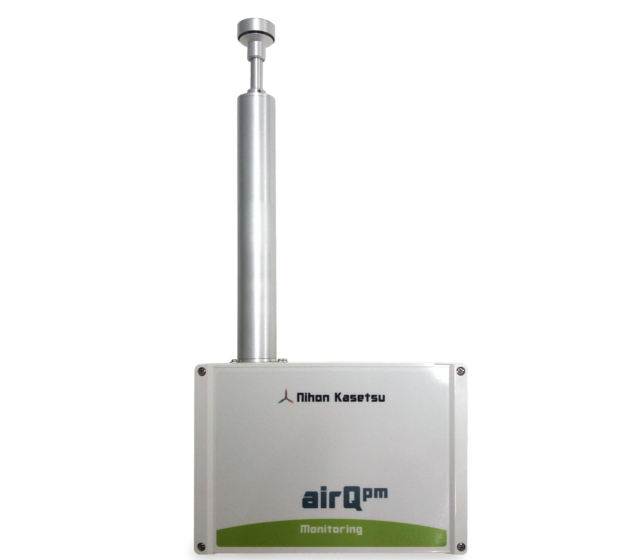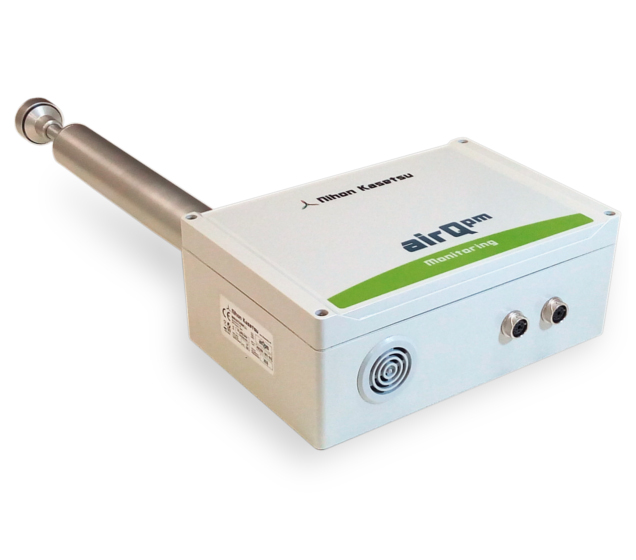airQpm
Dust sensing kit, for particulate matter concentration monitoring.
Particulate matter concentration is the sum of all solid and liquid particles suspended in air many of which are hazardous. This complex mixture includes both organic and inorganic particles, such as dust, pollen, soot, smoke, and liquid droplets. These particles vary greatly in size, composition, and origin. Particle pollution includes “inhalable coarse particles”, with diameters larger than 2.5 micrometers and smaller than 10 micrometers and “fine particles”, with diameters that are 2.5 micrometers and smaller.
Those particles damage the environment and are directly related with serious human health problems. Prolonged exposure to coarse particles, called PM10, can irritate eyes, nose or throat, and provokes breathing diseases. Fine particles, PM2.5, can get into the deep parts of your lungs, even end up in your blood stream.
Nihon Kasetsu’s airQpm sensor allows the continuous monitoring of dust concentration in the air. Its optical sensor transforms scattered light into electrical signals which are processed to provide mass measurements. This sensing cell calculates the respective PM values according to the method defined by European Standard EN 481.
360º inlet is optimized for sampling air in outdoor conditions. Excludes rain water and large objects from the air sample, while having a minimal effect on the passage of total suspended particulate matter. Optional anodized aluminum heated inlet to avoid condensation.
Specifications
| Power Supply | ||
|---|---|---|
| Maximun consumption power | 2,7 | W |
| Power supply voltage 9 VDC | 9 | VDC |
| Current consumption | <0,3 | A |
| Physical Specifications | ||
| Dimensions | 192 x 121 x 87 | mm |
| Weight | 0,5 | kg |
| IP | 67 | |
| Key Specifications | ||
| Measurement principles | Light scatter by individual particles carried in a sample air stream through a laser beam | |
| Total flow rate | 1,2 | L/min |
| Measurement range | 0 ÷ 250 | µg/m3 |
| Temperature range | -20 ÷ 50 | ºC |
| Humidity range | 0 ÷ 90 (non-condensing) | %rh |
| Particle sizes | 10 | µg |
| 2,5 | ||
| Certifications | Complies with IEC 60825-1 2014. Class 1 Laser Product | |
| Complies with 21 CFR-1040.10 and 1040.11 exception for deviation pursuant to laser notice number 50 date June 24, 2007 | ||


